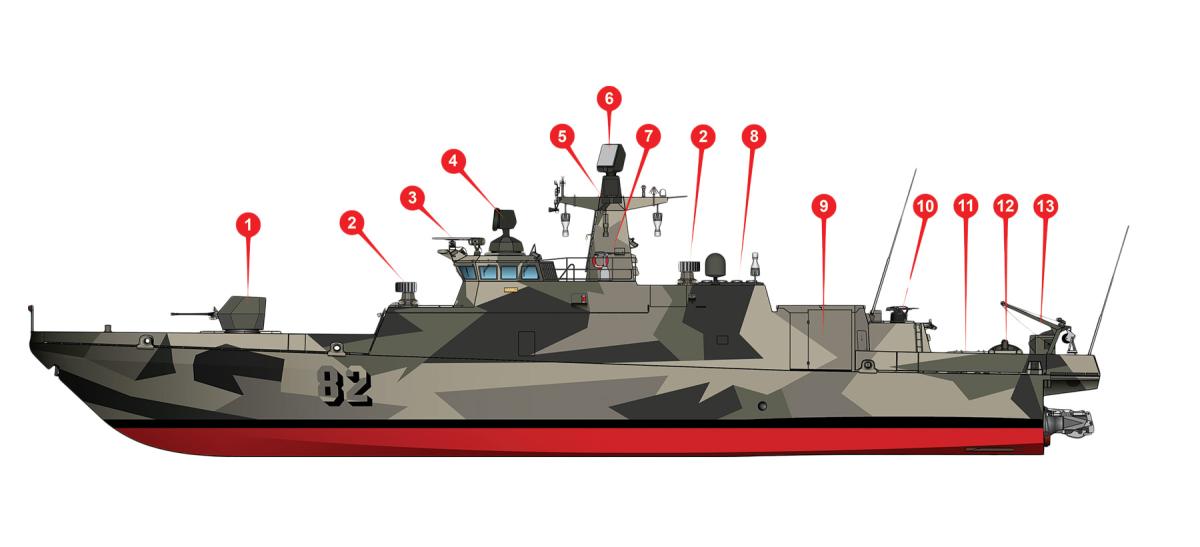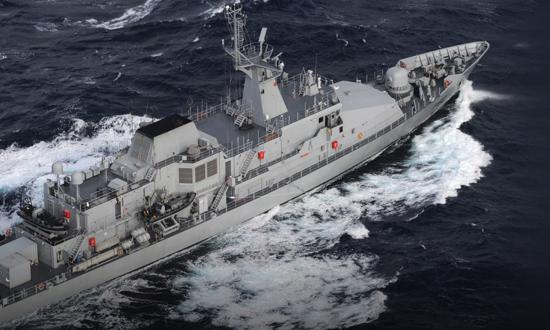Finland’s four Hamina-class guided-missile patrol craft—the Hamina, Tornio, Hanko, and Pori—were initially delivered between 1999 and 2006, but they recently have completed an extensive midlife modernization program that ran from 2018 through April 2022. As the country readies for NATO membership, its fleet is preparing for the next generation of maritime defense in the Baltic. The Hamina-class modernization program is but one element of that endeavor, incorporating an impressive suite of new systems and placing a renewed emphasis on antiship and submarine-hunting capabilities.
The craft have been up-armed with four Israeli Gabriel V antiship missiles, known as PTO-2020 in Finnish service. These large 2,756-pound missiles are fitted in a covered launcher and replace the RBS-15 missiles previously carried. The Gabriel V/PTO-2020 can engage enemy ships or land targets more than 100 nautical miles away. A maximum range of up to 216 nautical mile (nm) has been reported.
The Haminas’ antisubmarine capabilities have been enhanced with the addition of a Kongsberg ST-2400 variable-depth sonar. A 400-mm torpedo launcher was added on the starboard side near the ship’s stern for employment of Saab Type 45 lightweight torpedoes or the more advanced Type 47 torpedo once that weapon becomes operational in 2023. These lightweight torpedoes can be fired against both enemy submarines and surface ships. To offset increased weight, the class has received a 40-mm Bofors Mk 4 multipurpose gun in place of the larger 57-mm Bofors L/70 Mk 3.
The modernization program also adds a Saab Trackfire remote weapon and sensor station capable of operating with a 12.7-mm or 7.62-mm machine gun. Saab’s 9LV combat management system was installed as part of the overhaul, but the defensive armament remains largely unchanged. This includes Multi-Ammunition Softkill System decoy launchers and eight Denel Umkhonto surface-to-air missiles carried in vertical launch system (VLS) cells.
From the outset, these stealthy missile patrol craft have incorporated numerous signature-reduction measures, such as modern shaping designs and a composite superstructure coated in radar-absorbent materials. The ships have specialized engineering mountings to minimize radiated noise, and their exhaust systems can be ducted through seawater or directed upward to further decrease infrared or acoustic signatures. The Hamina class, which has also been known as the Rauma 2000 class, was built by Finland’s Aker Finnyards in Rauma. Each ship displaces 268 tons fully loaded and measures 167 feet long, with a 28-foot beam and a 7-foot draft. Crew size is reportedly 20–29 personnel. Propulsion is provided by two diesel engines powering two waterjets. This enables a top speed of 32 knots and a range of 500 nm when operating at 30 knots. Current plans call for the modernized warships to remain in service well into the 2030s.







